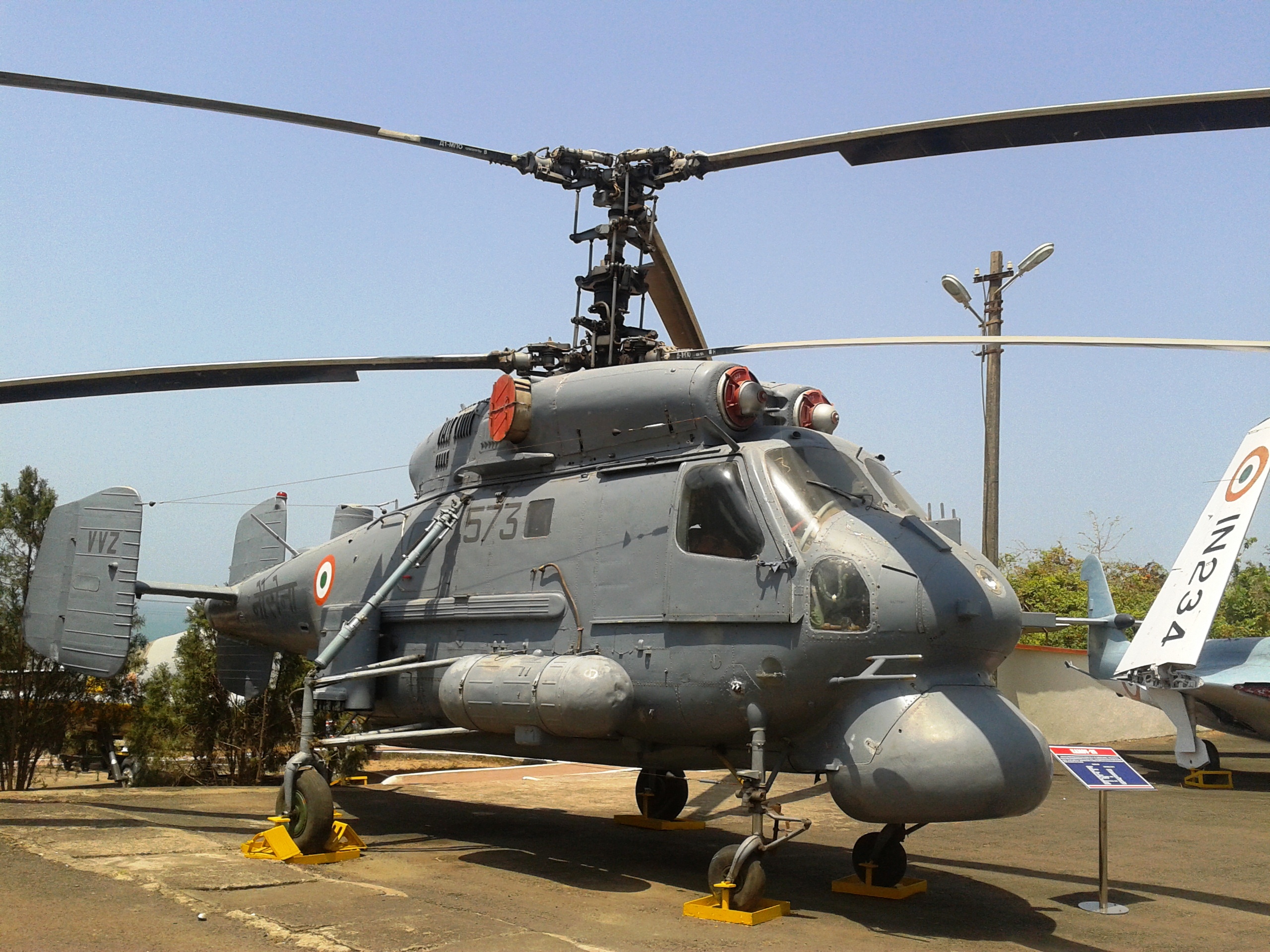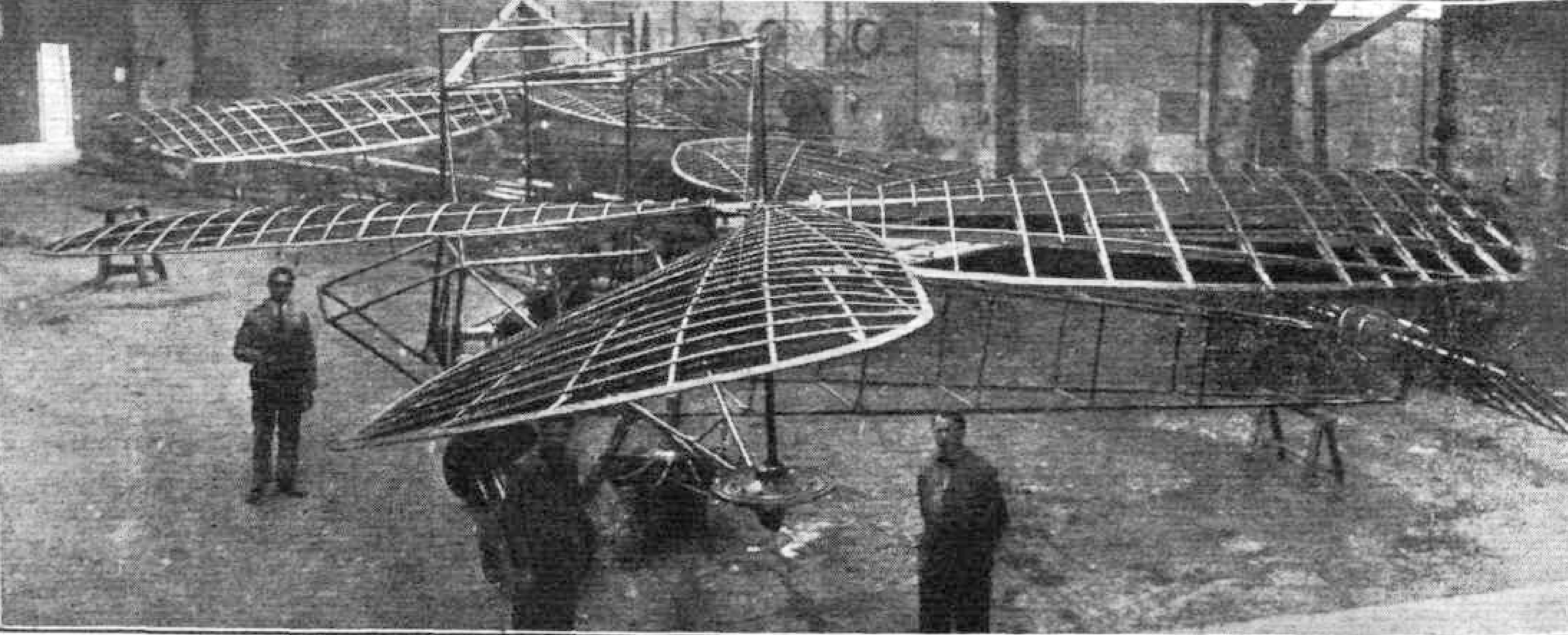|
Kamov Ka-20
The Kamov Ka-20 ( NATO reporting name Harp) was a Soviet twin-engined prototype helicopter designed and built by Kamov that led to the Ka-25 family of helicopters, it was developed, during the rise of the cold war to counter American Naval Offensives. Design and development Developed from the earlier Ka-15 to meet a 1958 Soviet Navy requirement for a heavy shipborne helicopter, the Ka-20 had the similar twin contra-rotating, three-blade rotors of the earlier Ka-15 design and was powered by two 670 kW turboshaft engines. The Ka-20 was built to demonstrate the feasibility of mounting the turboshaft engines above the cabin and it had no mission equipment or corrosion protection although it was fitted with a nose-mounted radome. The Ka-20 first became known outside the Soviet Union at the 1961 Tushino Aviation Day display where a Ka-20 was demonstrated fitted with dummy missiles on the cabin sides. The design was developed as the Ka-25 The Kamov Ka-25 (NATO reporting na ... [...More Info...] [...Related Items...] OR: [Wikipedia] [Google] [Baidu] |
Kamov
JSC Kamov (russian: Камов) is a Russian rotorcraft manufacturing company based in Lyubertsy, Russia. The Kamov Design Bureau ( design office prefix Ka) has more recently specialised in compact helicopters with coaxial rotors, suitable for naval service and high-speed operations. History Kamov was founded by Nikolai Ilyich Kamov, who started building his first rotary-winged aircraft in 1929, together with N. K. Skrzhinskii. Up to 1940, the year of Kamov plant establishment, they created many autogyros, including the TsAGI A-7-3, the only armed autogyro to see (limited) combat action. From 2002 AFK Sistema controlled a 51% stake in the company, with MiG controlling the remaining 49%. Kamov was sold to Oboronprom in 2005. Kamov merged with Mil and Rostvertol to form Russian Helicopters. The Kamov brand name was retained, though the new company dropped overlapping product lines. See also * Aircraft industry of Russia * List of Kamov aircraft This is a list of aircraft p ... [...More Info...] [...Related Items...] OR: [Wikipedia] [Google] [Baidu] |
Kamov Ka-25
The Kamov Ka-25 (NATO reporting name "Hormone") is a naval helicopter, developed for the Soviet Navy in the USSR from 1958. Design and development In the late 1950s there was an urgent demand for anti-submarine helicopters for deployment on new ships equipped with helicopter platforms entering service with the Soviet Navy. Kamov's compact design was chosen for production in 1958. To speed the development of the new anti-submarine helicopter Kamov designed and built a prototype to prove the cabin and dynamic components layout; designated Ka-20, this demonstrator was not equipped with mission equipment, corrosion protection or shipboard operational equipment. The Ka-20 was displayed at the 1961 Tushino Aviation Day display. Definitive prototypes of the Ka-25 incorporated mission equipment and corrosion protection for the structure. The rotor system introduced aluminium alloy blades pressurised with nitrogen for crack detection, lubricated hinges, hydraulic powered controls, al ... [...More Info...] [...Related Items...] OR: [Wikipedia] [Google] [Baidu] |
NATO Reporting Name
NATO reporting names are code names for military equipment from Russia, China, and historically, the Eastern Bloc (Soviet Union and other nations of the Warsaw Pact). They provide unambiguous and easily understood English words in a uniform manner in place of the original designations, which either may have been unknown to the Western world at the time or easily confused codes. For example, the Russian bomber jet Tupolev Tu-160 is simply called "Blackjack". NATO maintains lists of the names. The assignment of the names for the Russian and Chinese aircraft was once managed by the five-nation Air Standardization Coordinating Committee (ASCC), but that is no longer the case. American variations The United States Department of Defense (DOD) expands on the NATO reporting names in some cases. NATO refers to surface-to-air missile systems mounted on ships or submarines with the same names as the corresponding land-based systems, but the US DoD assigns a different series of numbers with ... [...More Info...] [...Related Items...] OR: [Wikipedia] [Google] [Baidu] |
Kamov Ka-15
The Kamov Ka-15 (NATO reporting name Hen) was a Soviet two-seat utility helicopter with coaxial rotors, which first flew on 14 April 1952 at the hands of test pilot D. K. Yefremov. It was the world's first mass-produced coaxial helicopter. State acceptance trials were completed in 1955, and the helicopter entered production the following year at aircraft factory No. 99 in Ulan-Ude. It was a precursor to the Ka-18 and was fitted with the M-14 engine (helicopter version). It was primarily used for bush patrol, agricultural purposes and fishery control. Variants * Ka-15 – two-seat light utility helicopter for the Soviet Navy. * Ka-15M – two-seat light utility helicopter. Civilian version of the Ka-15. * Ka-18 – four-seat light utility helicopter. Operators ; * Aeroflot * Soviet Naval Aviation Soviet Naval Aviation (AV-MF, for ''Авиация военно-морского флота'' in Russian, or ''Aviatsiya voyenno-morskogo flota'', literally "aviati ... [...More Info...] [...Related Items...] OR: [Wikipedia] [Google] [Baidu] |
Tushino Aviation Day
In the life of Soviet Union, air shows were a highly regarded type of parade, almost always of military nature. They happened on various occasions and anniversaries, in many locations across the country. A notable air show was the Tushino Air Show held annually in August. Dates Soviet Air Fleet Day The most frequent date of air shows was the Soviet Air Fleet Day (russian: День Воздушного Флота). It was also known as the Soviet Air Forces Day (russian: День Военно-воздушных Сил), or Soviet Aviation Day.Pre-history of MAKS - provides the complete information on Russian and Soviet air shows. It was established in 1933 and was most usually held on the third Sunday of August, weather permitting. The initial exhibition on 18 August 1933, was a result of |
List Of Rotorcraft
This is a list of rotorcraft, including helicopters, autogyros, rotor kites and convertiplanes. A A-B Helicopters * A-B Helicopters A/W 95 American Aircraft International * AAI Penetrator Aero * Aero HC-2 Heli Baby Aero-Astra * Aero-Astra Okhotnik 1 Aero Eli Serviza * Aero Eli Serviza Yo-Yo 222 Aerokopter * Aerokopter AK1-3 Sanka Aerospace General * Aerospace General Mini-Copter Aérospatiale *Aérospatiale Alouette II *Aérospatiale Alouette III * Aérospatiale Cougar * Aérospatiale Dauphin * Aérospatiale Djinn * Aérospatiale Ecureuil *Aérospatiale Gazelle * Aérospatiale Lama *Aérospatiale Puma * Aérospatiale Super Frelon * Aérospatiale Super Puma Aerotécnica * Aerotécnica AC-11 * Aerotécnica AC-12 * Aerotécnica AC-14 Agusta * Agusta AZ.101G * Agusta AB.102 *Agusta A103 *Agusta A104 Helicar * Agusta A105 *Agusta A106 *Agusta A109 * Agusta A115 * Agusta A119 Koala * Agusta A129 Mangusta AgustaWestland *AgustaWestland AW101 ... [...More Info...] [...Related Items...] OR: [Wikipedia] [Google] [Baidu] |
Kamov Aircraft
JSC Kamov (russian: Камов) is a Russian rotorcraft manufacturing company based in Lyubertsy, Russia. The Kamov Design Bureau ( design office prefix Ka) has more recently specialised in compact helicopters with coaxial rotors, suitable for naval service and high-speed operations. History Kamov was founded by Nikolai Ilyich Kamov, who started building his first rotary-winged aircraft in 1929, together with N. K. Skrzhinskii. Up to 1940, the year of Kamov plant establishment, they created many autogyros, including the TsAGI A-7-3, the only armed autogyro to see (limited) combat action. From 2002 AFK Sistema controlled a 51% stake in the company, with MiG controlling the remaining 49%. Kamov was sold to Oboronprom in 2005. Kamov merged with Mil and Rostvertol to form Russian Helicopters. The Kamov brand name was retained, though the new company dropped overlapping product lines. See also * Aircraft industry of Russia * List of Kamov aircraft This is a list of aircraft p ... [...More Info...] [...Related Items...] OR: [Wikipedia] [Google] [Baidu] |
1960s Soviet Anti-submarine Aircraft
Year 196 ( CXCVI) was a leap year starting on Thursday (link will display the full calendar) of the Julian calendar. At the time, it was known as the Year of the Consulship of Dexter and Messalla (or, less frequently, year 949 '' Ab urbe condita''). The denomination 196 for this year has been used since the early medieval period, when the Anno Domini calendar era became the prevalent method in Europe for naming years. Events By place Roman Empire * Emperor Septimius Severus attempts to assassinate Clodius Albinus but fails, causing Albinus to retaliate militarily. * Emperor Septimius Severus captures and sacks Byzantium; the city is rebuilt and regains its previous prosperity. * In order to assure the support of the Roman legion in Germany on his march to Rome, Clodius Albinus is declared Augustus by his army while crossing Gaul. * Hadrian's wall in Britain is partially destroyed. China * First year of the '' Jian'an era of the Chinese Han Dynasty. * Emperor Xian ... [...More Info...] [...Related Items...] OR: [Wikipedia] [Google] [Baidu] |
Military Helicopters
A military helicopter is a helicopter that is either specifically built or converted for use by military forces. A military helicopter's mission is a function of its design or conversion. The most common use of military helicopters is transport of troops, but transport helicopters can be modified or converted to perform other missions such as combat search and rescue (CSAR), medical evacuation (MEDEVAC), airborne command post, or even armed with weapons for attacking ground targets. Specialized military helicopters are intended to conduct specific missions. Examples of specialized military helicopters are attack helicopters, observation helicopters and anti-submarine warfare helicopters. Types and roles Military helicopters play an integral part in the sea, land and air operations of modern militaries. Generally manufacturers will develop airframes in different weight/size classes which can be adapted to different roles through the installation of mission specific equipment. To ... [...More Info...] [...Related Items...] OR: [Wikipedia] [Google] [Baidu] |
Coaxial Rotor Helicopters
In geometry, coaxial means that several three-dimensional linear or planar forms share a common axis. The two-dimensional analog is '' concentric''. Common examples: A coaxial cable is a three-dimensional linear structure. It has a wire conductor in the centre (D), a circumferential outer conductor (B), and an insulating medium called the dielectric (C) separating these two conductors. The outer conductor is usually sheathed in a protective PVC outer jacket (A). All these have a common axis. The dimension and material of the conductors and insulation determine the cable's characteristic impedance and attenuation at various frequencies. Coaxial rotors are a three-dimensional planar structure: a pair of helicopter rotors (wings) mounted one above the other on concentric shafts, with the same axis of rotation (but turning in opposite directions). In loudspeaker design, coaxial speakers A coaxial loudspeaker is a loudspeaker system in which the individual driver units radiate ... [...More Info...] [...Related Items...] OR: [Wikipedia] [Google] [Baidu] |


